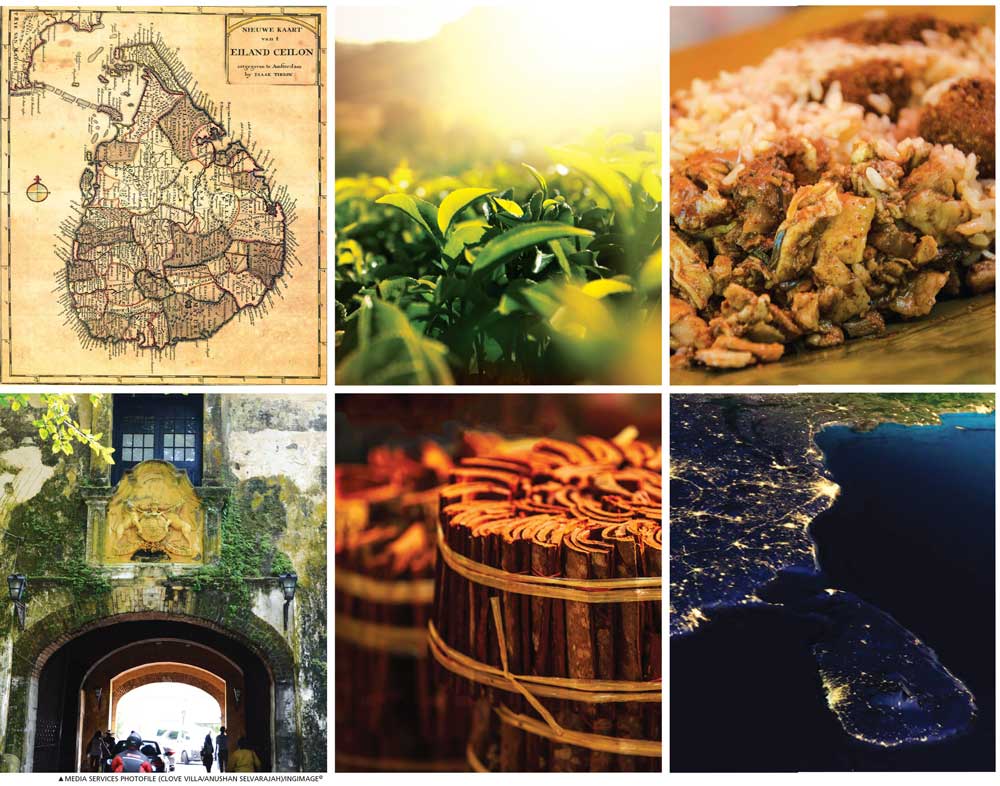TAILWINDS IN OUR SAILS
Wijith DeChickera remembers that foreigners for millennia found our island’s shores
to be a fair haven – and yearns for the restoration of our reputation internationally

A nation is its people – natives and visitors, and those who love the land enough to become resident guests. As a result of the rich interaction between these tribes over the years, a fourth demographic has been added: Sri Lankan expats.
As for visitors, Sri Lanka has three European countries etched in blood – and Ceylon Tea in its annals. These colonisers of the Indian Ocean’s ‘pearl’ were explorers and exploiters of a once resource rich paradise. And it will always be with mixed feelings that we islanders regard their conquests, occupations and legacies.
The Portuguese came with bibles in one hand and broadswords in the other, building churches in coastal areas while transforming the cultural and culinary lifestyles of its citizens – among other aspects of island life including dress, dance and diets – for generations.
Dutch tastes ran from fortifications and martial mayhem in the Maritime Provinces to today’s militarised lamprais (caterers battle cuisine businesses to serve their unique versions) – albeit imported from the Netherlands’ Javanese colony (talk about the flavour of ‘cultural appropriation’).
Unique gifts of our ultimate colonial power span the gamut from laws to government buildings; through roads and railways to the hinterland; to rapine and pillage of tea, rubber, precious stones and other historical-cultural artefacts – now ‘resident aliens’ in British museums.
The Dutch of late have been courteously repentant, promising to restore such loot and plunder to their former colonies.
However, these invaders were not the only far-flung cultures with which our ancient civilisation interacted.
And as Sri Lanka navigates rough – yet, potentially rewarding – seas of a new internationalism, it serves well our present purposes (and future prospects) to dip into past chapters replete with alien people clutching their gods, to draw salutary lessons from its antique encounters.
For instance, ‘the Greeks had a name for it’ – Taprobānā or Taprobanē – and hymned our regional reputation for commerce. Roman author Pliny inferred its existence before the time of Macedonian conqueror Alexander the Great, whose federated Grecian armies expanded his empire up to the Indus.
A trio of Greek cartographers – Megasthenes, the first European to mention the island; Eratosthenes, who included ‘Taprobana’ in his geography, copied by Alexandrian map maker Claudius Ptolemy; and Strabo, in Roman Emperor Augustus’s time – knew it well.
As Sri Lankan scholar Dr. Prabo Mihindukulasuriya, a resident in the diaspora today, notes: “Megasthenes … also recorded that the inhabitants of Taprobanē (Sri Lanka) are more productive of gold and large pearls than the Indians.” The latter geographer recorded: “Taprobane sends great amounts of ivory, tortoiseshell and other merchandise to the markets of India.”
Could we then be the famous entrepot of King Solomon’s time – from where “once every three years the ships of Tarshish came bringing gold, silver, ivory, apes and peacocks” (1 Kings 10:22)? (Note to local MPs: this is not carte blanche to export Sri Lankan monkeys!)
Arab traders, as well as Phoenician intermediaries as early as the 12th century BC and Persian merchantmen much later, knew Serendip to be a place of happy discoveries, even if one was not searching for such delightfully insular windfalls.
Of special mention among these mercantile classes was Ceylon cinnamon (Cinnamomum zeylanicum), a much sought after spice obtained from a small evergreen tree endemic to plantations on our coppery soil.
And what lessons for a recalibrated Sino-Indian interrelationship, to say nothing of Sri Lanka’s potentially lucrative religious tourism market, could we make of the 5th century Chinese Buddhist monk Faxian (romanised Fa Hien/Fa-hsien), whose visit in 402 AD to the subcontinent – including ‘Lanka’ as it was then known – fostered friendlier regional ties?
If we are to reposition our resplendent isle (for that is what ‘Sri Lanka’ once meant) as a ‘paradise’ again, we would do well to heed elegies such as seasoned travellers like Marco Polo sang of us: “For its size, better circumstanced than any island in the world.”
As a trader in precious goods, antiquity records us favourably. If modernity wishes to salvage, restore and make flourish more than merely that reputation, it could draw from the admiring glances explorers and adventurers cast our way of old. And still do even now, covetously!
The world is Sri Lanka’s oyster. Our lovers – especially its expats – need to crack its luscious, meaty delights open again; with careful concern that commercialism doesn’t overshadow culture and civilisation, which adorned our country’s character for centuries.
